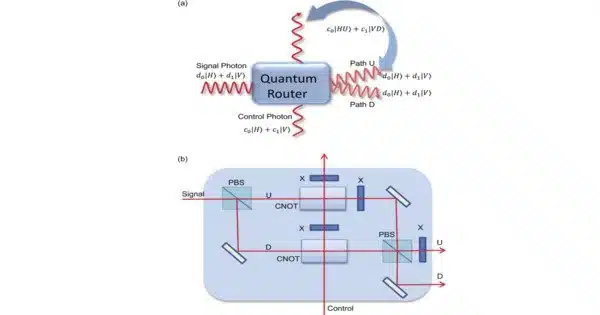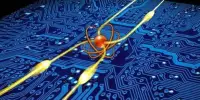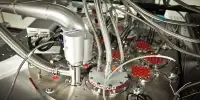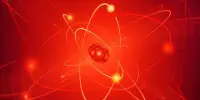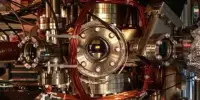Controlling signal routing is an important aspect of quantum information processing (QIP) systems, just as it is in classical information processing systems. However, due to the unique properties of quantum states, signal routing in quantum systems presents both challenges and opportunities not found in classical systems.
Signal routing and isolation from noise and back-reflections are critical in many practical situations in both classical communication and quantum processing. In a theory-experimental collaboration, a team led by Andreas Nunnenkamp from the University of Vienna and Ewold Verhagen from the Amsterdam-based research institute AMOLF achieved unidirectional signal transport in pairs of “one-way streets.” This study, published in Nature Physics, opens up new possibilities for more flexible signaling devices.
Devices that allow signals to be routed, such as those carried by light or sound waves, are critical in many practical situations. This is the case, for example, in quantum information processing, where the quantum computer’s states must be amplified in order to be read out – without noise from the amplification process corrupting them. As a result, devices such as isolators and circulators that allow signals to travel in a one-way channel are in high demand. However, such devices are currently lossy and bulky, requiring large magnetic fields that break time-reversal symmetry to achieve unidirectional behavior. These constraints have prompted concerted efforts to develop alternatives that require less space and do not rely on magnetic fields.
The new study published in Nature Physics introduces a new class of systems characterized by a phenomenon the authors call “quadrature nonreciprocity.” Quadrature nonreciprocity exploits interference between two distinct physical processes. Each of the processes produces a wave that contributes to the transmitted signal. Like water waves produced by two thrown pebbles, the two waves can either cancel or amplify each other, in a phenomenon known as interference.
We developed a versatile experimental toolbox that allowed us to control the two different types of relationships that are required to implement quadrature nonreciprocity. We were able to demonstrate the resulting unidirectional signal transport experimentally.
Jesse Slim
This allows for unidirectional signal transmission without time-reversal breaking and results in a distinct dependence on the signal’s phase, i.e., quadrature. “In these devices, transmission depends not only on the direction of the signal, but also on the signal quadrature,” says Clara Wanjura, the study’s theoretical lead author. “This creates a’dual carriageway’ for signals, with one quadrature transmitted in one direction and the other quadrature transmitted in the opposite direction.” Time-reversal symmetry then requires that the quadratures always travel in opposite directions in two separate lanes.”
The AMOLF experimental team demonstrated this phenomenon experimentally in a nanomechanical system in which laser light orchestrates interactions among mechanical vibrations of small silicon strings. Laser light exerts forces on the strings, allowing interactions between their various vibration ‘tones’ to take place. “We developed a versatile experimental toolbox that allowed us to control the two different types of relationship that are required to implement quadrature nonreciprocity,” says Jesse Slim, the study’s experimental lead author. We were able to demonstrate the resulting unidirectional signal transport experimentally.”
The research opens up new avenues for signal routing and quantum-limited amplification, with applications in quantum information processing and sensing.
In quantum information processing, quantum bits (qubits) are the fundamental units of information. Qubits can exist in superpositions of states, allowing them to represent multiple values simultaneously. They can also become entangled, meaning the state of one qubit is dependent on the state of another qubit, even if they are physically separated. This property forms the basis for quantum computation, communication, and other quantum technologies.
